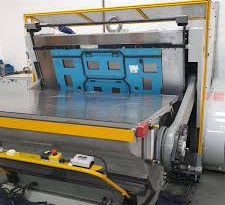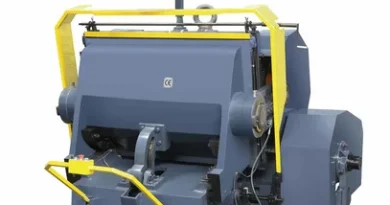“Revolutionizing Precision and Efficiency: Unveiling the Latest Technological Advancements in Die-Cutting Machinery and Their Transformative Impact on Global Manufacturing Practices”
Die-cutting machinery is a cornerstone in many manufacturing processes, especially in industries like packaging, automotive, and electronics, where precision cut-outs are crucial. These machines use dies or sharp blades to cut, shape, or form materials like paper, cardboard, metal, or plastic into specific shapes. Recent technological advancements have significantly enhanced the capabilities of die-cutting machinery, making them more efficient, precise, and versatile. This article explores the latest innovations in die-cutting machinery and their profound impact on the manufacturing sector.
Technological Advancements in Die-Cutting Machinery
- Enhanced Precision and Speed: Modern die-cutting machines are equipped with high-precision components and faster processing capabilities. Improvements in servo-motor technology and CNC (Computer Numerical Control) systems allow for intricate cuts with minimal material waste and higher throughput, ensuring that production lines are both efficient and cost-effective.
- Integration of Automation: Automation has become a key feature in contemporary die-cutting machinery. Automated feeding systems, tool-changing mechanisms, and material handling solutions reduce manual labor and improve operational safety. These automated systems also enhance repeatability and reduce setup times for new projects.
- Versatility in Material Handling: The latest die-cutting machines can handle a wider range of materials, from thin films to thick metal sheets. Advances in die technology, including adjustable and rotary dies, allow for seamless transitions between different material types without compromising quality or efficiency.
- Smart Control Systems: Equipped with advanced sensors and control software, modern die-cutting machines can adjust parameters in real-time based on material feedback. This adaptability prevents errors and ensures consistent quality, even under variable operating conditions.
- Sustainability and Energy Efficiency: New models of die-cutting machines focus on reducing energy consumption and increasing sustainability. These machines are designed to optimize power use and are capable of recycling scrap material, aligning with global efforts to reduce industrial carbon footprints.
Impact on the Manufacturing Industry
The advancements in die-cutting technology have several significant impacts on the manufacturing industry:
- Increased Production Efficiency: The integration of high-speed, precise cutting capabilities, and automated systems allows manufacturers to produce more in less time, significantly enhancing overall productivity.
- Higher Quality Products: Precision engineering and smart control systems ensure products are consistently produced to high standards, reducing waste and improving customer satisfaction.
- Flexibility in Production: The ability to quickly switch between different materials and designs makes it easier for manufacturers to adapt to changing market demands and customer preferences.
- Reduced Operational Costs: Automation and improved energy efficiency lower the costs associated with labor, energy, and material waste, contributing to more sustainable manufacturing practices.
Future Trends
The future of die-cutting machinery looks towards greater integration of AI and IoT (Internet of Things) technologies. These technologies will enhance machine intelligence, enabling predictive maintenance, further automation, and even more efficient operation. Additionally, the development of new materials and cutting technologies will continue to expand the capabilities and applications of die-cutting machinery.



